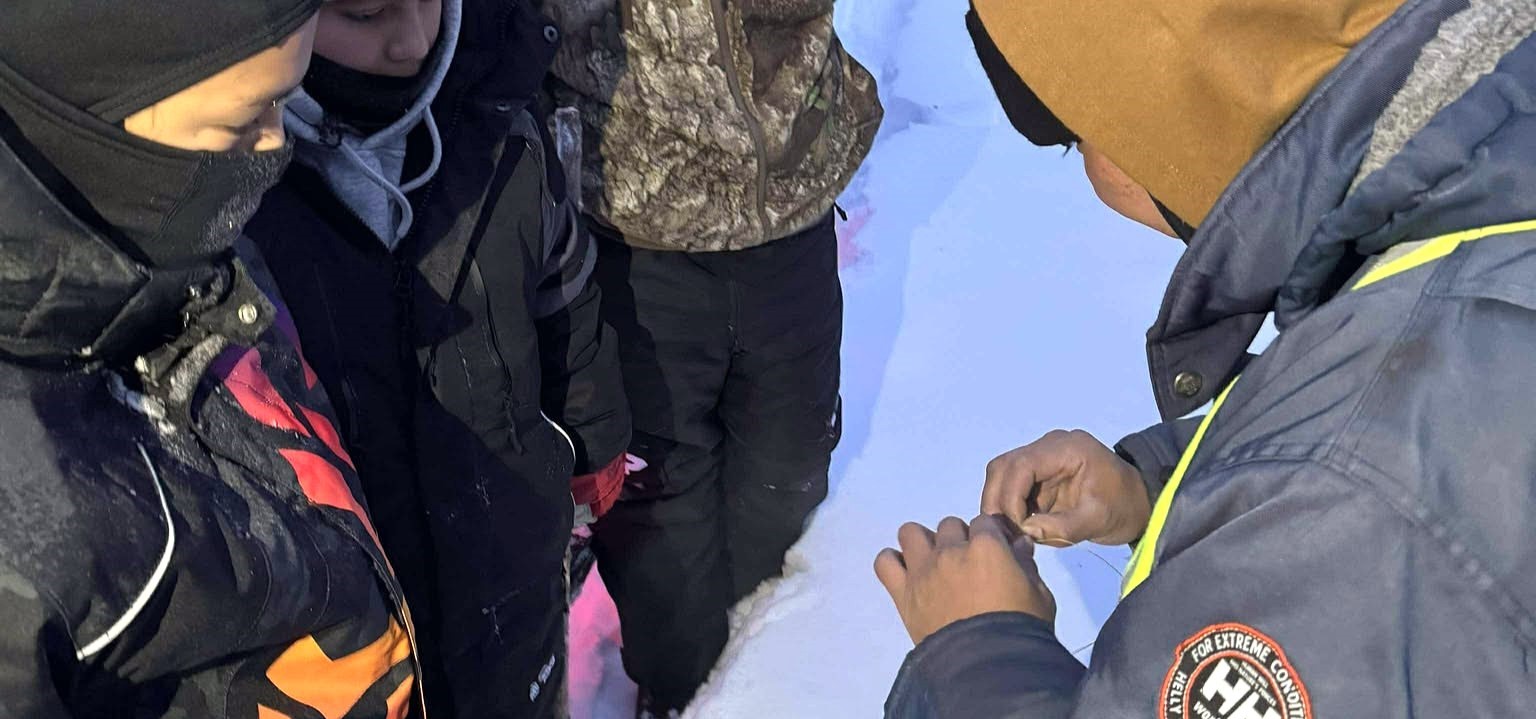Temporary Foreign Workers in Canada
The Canadian Federation of Agriculture says that, “International workers are essential to the production of food in Canada and have been for over 50 years.”. The federation notes that there have always been chronic labour shortages in the agriculture sector because of the seasonal aspect of crop growth, rural population migration, and many other factors. The Conference Board of Canada agrees with the federation in this report from 2016, saying that Temporary Foreign Workers are a pivotal aspect that has allowed the country’s agriculture sector to succeed. Labour shortages in the agricultural sector have doubled from 2006 to 2016 and shortages were projected to double again from 2016 to 2026.
This infographic shows that foreign workers comprise more than 45% of the employed agricultural workforce in Canada. Further, over 40% of these foreign workers are only temporarily employed under the Seasonal Agricultural Worker Program (SAWP). These temporary workers fill approximately three-quarters of total agriculture labour shortages in Canada.
In monetary terms, seeing as the University of Guelph shares that total vacancies in the agricultural sector result in at least $1.5 billion in lost productivity annually, that means that temporary foreign workers save and make Canada at least $4.5 billion per year in this sector alone.
Temporary Foreign Workers in Manitoba
In Manitoba, over 1,100 job openings go unfilled in the local agriculture sector, resulting in an estimated $367 million in lost sales. Further, over half of all employers declared that they couldn’t find enough workers for help in the 2018 growing season. The inability of domestic job supply to meet the demand of the agriculture sector continues to widen annually as well. The Province doesn’t employ many temporary foreign workers locally, as they only make up 3% of the total agricultural workforce.
Prairie Region Temporary Foreign Worker (TFW) Project
The Prairie Region project was mentioned by Emily Halldorson in her profile story. This initiative aims to support temporary foreign workers. This includes activities like orientation sessions, disbursing health and safety information, and occasional announcements. This project also has some resources and guides for temporary foreign workers, including:
They also have a tab of the Manitoban partners that can offer additional support, which include:
Issues with the Temporary Foreign Workers Program
Even though temporary foreign workers “have the same rights and responsibilities in the workplace as other Manitobans“, Migrante Manitoba notes that these programs contain inherent power imbalances. This mainly includes a fear of reprisal through punishing or firing workers, as their permit is linked to employment. Employment and Social Development Canada (ESDC) recognizes some of these challenges in the government’s 2021 ‘What We Heard Report’:
“Temporary Foreign Workers… face particular vulnerabilities as participants in the Canadian labour market. These vulnerabilities are attributable to multiple factors including their temporary status, language barriers and limited accommodation options in rural/remote areas.”
A migrant advocacy group in Ontario called Fuerza Puwersa made a submission to the Ontario Ministry of Labour in 2015. The submission started with an introduction of issues stemming from the temporary foreign worker program, including a first glance at the imbalances that temporary foreign workers are regularly faced with.
View the submission here
In 2016, the United Food and Commercial Workers Union (UFCW) called on the government to replace the Temporary Foreign Workers Program with a system that allows these workers to permanently settle in Canada more easily. They add that increasing access to a permanent immigration pathway would further limit exploitative workplace behavior and increase supports both legal and financial (such as through CPP contributions and EI benefits, for example).
TFWs and COVID-19
In December 2021, Canada’s auditor general released a report stating that COVID-19 safety measures sometimes weren’t provided to temporary foreign workers by their workplaces during the height of the COVID-19 pandemic. This included incomplete enforcement of pandemic restrictions and regulations, such as not leaving sufficient space for social distancing requirements or not providing separate worker accommodations for those who tested positive for COVID-19.
Migrante Manitoba commented on these findings, saying that, “most workers are in a precarious situation because of the temporary foreign worker program itself”. Since healthcare is only available to temporary foreign workers after one year of working, temporary foreign workers are less likely to complain about poor working conditions or harassment, because healthcare is also tied to employment. Migrante Manitoba added that power imbalances like these pressure workers to work despite dangers, such as the spread of COVID-19.
The Current Situation
Since 2015, the worker program has introduced a Seasonal Cap Exemption, meaning that employers have no limit on the number of temporary foreign workers they can hire during the agricultural growing season. Last month in April, the government made this exemption permanent and increased the seasonal cap from 180 days to 270 days.
In response to the auditor general’s report last year, the federal government has committed to strengthen the housing component of the temporary foreign workers program in their ‘What We Heard Report’ with stronger reporting requirements for employers. Further, the government is also convening a semi-annual roundtable on worker safety issues next month in June as part of their Workforce Solutions Roadmap. The regulations for the temporary foreign workers program were also updated in July 2021 with some changes, the rationale being that there remain gaps in worker protection. Some of these changes include:
-
- Ensuring that up-to-date workers’ rights information is provided by employers
-
- Prohibiting employers from charging recruitment fees
-
- Healthcare access is provided and workplace-caused health issues are covered by employers
-
- The definition of ‘worker abuse’ now covers acts of reprisal
The Government adds that in addition to the semi-annual roundtable starting next month, more changes to the regulations are to come this summer to add to last summer’s revisions.
What do you think?
Are these changes enough to restore balance within the Temporary Foreign Workers Program?
Are there still other issues and gaps that need to be resolved?
Share them with us, we’d love to hear from you.
Bergen, R. CBC News. Migrant workers deemed ‘disposable’ before and during pandemic, Manitoba advocates say. (2021). Retrieved on May 16 2022 from https://www.cbc.ca/news/canada/manitoba/wfpcbc-cbc-temporary-foreign-worker-manitoba-covid-19-report-1.6282831.
Canadian Agricultural Human Resource Council. Canadian Agricultural Workforce. (2017). Retrieved on May 16 2022 from https://cahrc-ccrha.ca/sites/default/files/2021-11/LMI_Sesonal_Perm_E.pdf.
Canadian Agricultural Human Resource Council. How labour challenges will shape the future of agriculture in Manitoba. (2018). Retrieved on May 16 2022 from https://cahrc-ccrha.ca/sites/default/files/2021-11/factsheet_MB_E_web.pdf.
Canadian Federation of Agriculture. Temporary Foreign Worker Program and Canadian Agriculture. (2022). Retrieved on May 16 2022 from https://www.cfa-fca.ca/issues/temporary-foreign-worker-program-and-canadian-agriculture/.
The Conference Board of Canada. Sowing the Seeds of Growth. (2016). Retrieved on May 16 2022 from https://www.cfa-fca.ca/wp-content/uploads/2020/07/8363_SowingtheSeeds-BR.pdf.
Fuerza Puwersa. The changing workplaces review: Employment standards consultation. (2015). Retrieved on May 16 2022 from http://www.migrantworkersalliance.org/wp-content/uploads/2015/11/FP-ESA-Review-2015.pdf.
Government of Canada. Canada Gazette, Part I, Volume 155, Number 28: Regulations Amending the Immigration and Refugee Protection Regulations (Temporary Foreign Workers). (2021). Retrieved on May 27 2022 from https://canadagazette.gc.ca/rp-pr/p1/2021/2021-07-10/html/reg2-eng.html.
Government of Canada. Government of Canada announces Workforce Solutions Road Map. (2022). Retrieved on May 27 2022 from https://www.canada.ca/en/employment-social-development/news/2022/04/government-of-canada-announces-workforce-solutions-road-map–further-changes-to-the-temporary-foreign-worker-program-to-address-labour-shortages-ac.html.
Government of Canada. What We Heard: Consultations on accommodations for temporary foreign workers. (2021). Retrieved on May 27 2022 from https://www.canada.ca/en/employment-social-development/services/foreign-workers/reports/accommodations-what-we-heard.html#h2-2-2.
Liewicki, N. CBC News. Manitoba needs equitable health care from international students, migrant workers: coalition. (2021). Retrieved on May 16 2022 from https://www.cbc.ca/news/canada/manitoba/health-care-for-all-manitoba-international-students-migrant-workers-1.6263254.
Manitoba Employment Standards. Work in Manitoba Temporarily. (2022). Retrieved on May 5 2022 from https://immigratemanitoba.com/choose-manitoba/work-in-manitoba/work-temporarily/.
Migrante Canada. (2020). Retrieved on May 4 2022 from https://www.migrante.ca/about-us.
Neepawa and Area Immigrant Settlement Services. (2022). Retrieved on May 4 2022 from http://www.neepawasettlement.com/index.html.
Regional Connections Immigrant Services. (2022). Retrieved on May 4 2022 from https://regionalconnections.ca/.
TFW Hub. Support for Temporary Foreign Workers affected by COVID-19. (2021). Retrieved on May 4 2022 from https://www.tfwhub.ca/index.php.
University of Guelph. Foreign worker program fills labour gap in agriculture. (2020). Retrieved on May 16 2022 from https://www.uoguelph.ca/research/article/foreign-worker-program-fills-labour-gap-agriculture.
Thevenot, S. CIC News. Canada relaxes temporary foreign worker program rules to address labour shortages. (2022). Retrieved on May 16 2022 from https://www.cicnews.com/2022/04/canada-relaxes-temporary-foreign-worker-program-rules-to-address-labour-shortages-0424115.html#gs.0x4qtk.
© Copyright. All rights reserved. The content of this post may be used for educational purposes without written permission. For other uses, please contact the author(s) of th








